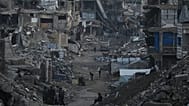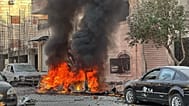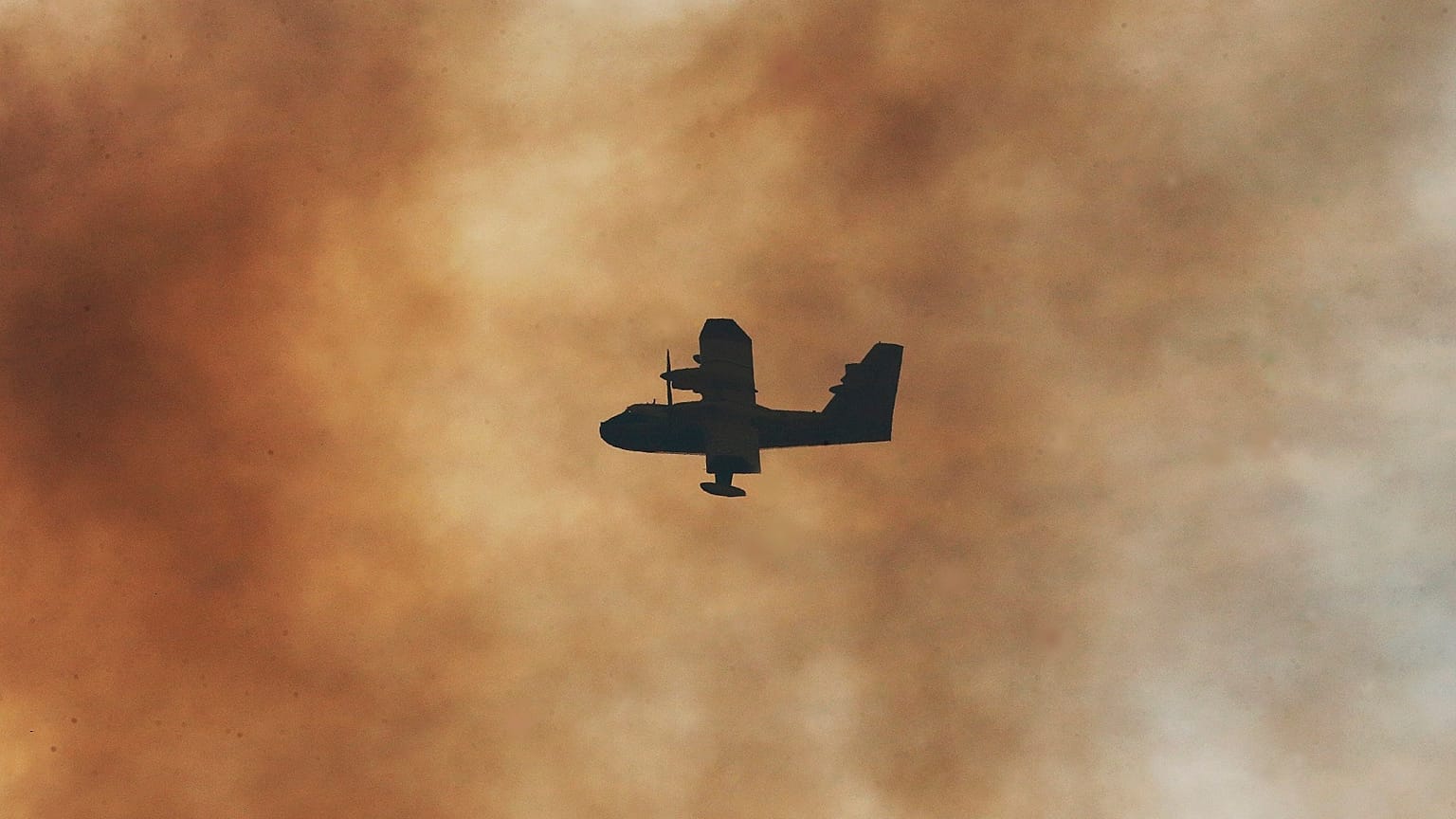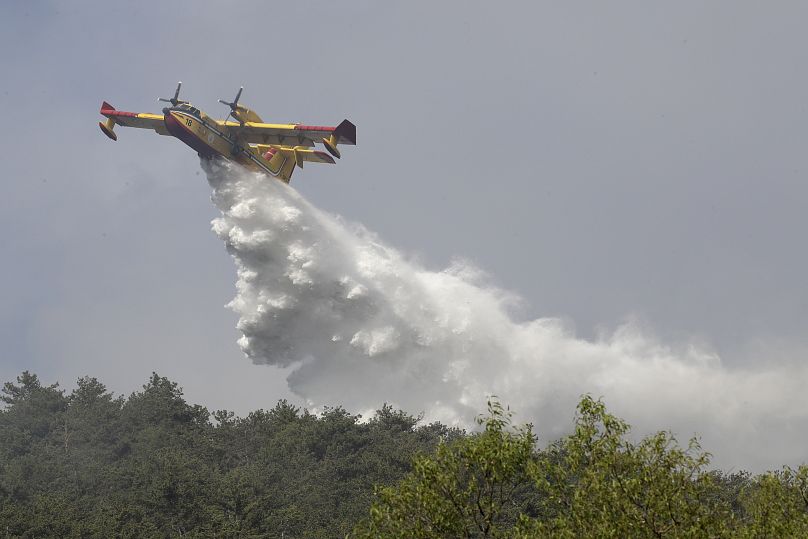Here's a look at the new firefighting aircraft the EU is buying.
As wildfires ripped through the Greek island of Rhodes in July, with flames eventually scorching 15 per cent of the island’s land, the European Union said it would invest in up to 12 new firefighting planes.
And as the fire season continued to devastate parts of Greece over the summer, the EU sent eleven planes and a helicopter, nearly half of the bloc’s firefighting air wing.
It’s little surprise then that EU Commissioner for Crisis Management, Janez Lenarcic, expects individual member states to order a further 12 planes separately.
Lenarcic revealed that manufacturer De Havilland Canada has agreed to re-launch production of the iconic "Canadair" aircraft if the EU orders are placed.
But with prices for Canadair water scoopers starting at around €30 million, will the EU’s plane gamble pay off?
What is a Canadair aka, the Super Scooper?
The Canadair belongs to a unique and small family of dedicated aerial firefighting aircraft.
It is often referred to as the super scooper since it does not have to return to a base to refill its water tanks. Instead, the aircraft are designed to be able to skim along the top of a water source, refilling their tanks through inlets, before taking off again.
The giant boat-like plane can take on board up to 5,455 litres of water in just 12 seconds, dumping its load on a fire, before refilling its tank and repeating the process. The fact that the aircraft can refill without returning to base makes it a useful asset when tackling fires in remote areas.
Unfortunately for the EU Commission, the plane went out of production in 2015 and De Havilland Canada now has to design and build a new generation of Canadair, the DHC-515.
As the intensity and duration of wildfires in Europe continue to grow, so too does the need for new aerial water tankers.
However, designing and producing planes is rarely a speedy process, and while the EU hoped to have the first deliveries in 2025, the first will not be delivered before the fire season of 2027.
New design and production costs may also push the price tag higher than €720 million for 24 new aircraft.
How do you use a water tanker?
The key to bringing wildfires under control is by attacking them early, according to Dan Reese, the ex-deputy chief of tactical air operations at the California Department of Forestry and Fire Protection.
Reese, who now runs his own International Wildfire Consulting Group (IWCG), explained how not using aerial assets early on can lead to a vicious circle where firefighting planes become overstretched and increasingly ineffective.
“If we don't attack smaller fires appropriately at the beginning when aviation is most effective, when those fires stand up because we didn't attack them properly then they get bigger. The bigger they get, the more resources they suck up,” he said.
He added that the “more resources big fires suck up, the more depleted the resources become for viable successful initial attacks on new fires”.
Water bombers are also rarely used or able to put out a wildfire by themselves. Instead, they are used to assist firefighters on the ground by suppressing and slowing fires, giving ground assets time to get ahead of blazes.
Canadair caveats
Despite the Canadair’s impressive appearance, there are limitations to the aircraft.
Like most firefighting aircraft, the plane can’t operate during heavy smoke, strong winds, or nighttime. However, while a plane which drops fire retardant cannot operate at night either, its previous payloads can continue to be effective throughout the dark, slowing and containing fires.
The same cannot be said for firefighting planes which deploy water. Once the water has evaporated it loses its usefulness, meaning continuous runs are needed to suppress a fire.
With Canadair planes, once the sun goes, so too does their usefulness. And given that the aircraft is most useful when used in the initial attacking of a fire, having to wait eight hours for the sun is far from ideal.
The aircraft also needs water bodies in which to refill its tanks. When operating inland in hot summer months, finding these bodies may become harder, especially if droughts continue to shrink EU reservoir and lake water levels.
The large price tag of the aircraft will also leave less money for the EU Commission to fund other types of firefighting aircraft. While the EU has little choice in this, after all, a company isn’t going to begin production of a new aircraft without significant firm orders, it will still result in less money for other firefighting resources.
“One must ask if the aerial firefighter’s toolbox is diverse enough to cover and support what is needed to make wildland firefighters successful. This means what impact will the aviation programme make 24 hours of the day, versus just 12 hours of the day?” Reese said.
The need for aerial assets
The EU’s Joint Resource Centre (JRC) predicts that “the number of days per year with high to extreme wildfire danger is projected to rise nearly everywhere in Europe with global warming as a result of higher temperatures and increased drought periods".
As wildfire seasons continue to begin earlier and last longer, the need for aerial firefighting capabilities is only set to grow.
Climate change may also mean that more northerly countries increasingly have to worry about severe wildfires.
It is little surprise then that big players such as Airbus are also looking at developing their own water tanker capabilities. In July of last year, the firm successfully tested a removable firefighting demonstrator kit on its A400M airlifter. It’s an ability it insists is meant to complement rather than compete with Canadairs.
Whichever aircraft and regardless of how they’re used, we can expect to hear the EU Commission talking much more about aerial firefighting assets in the years to come.
















